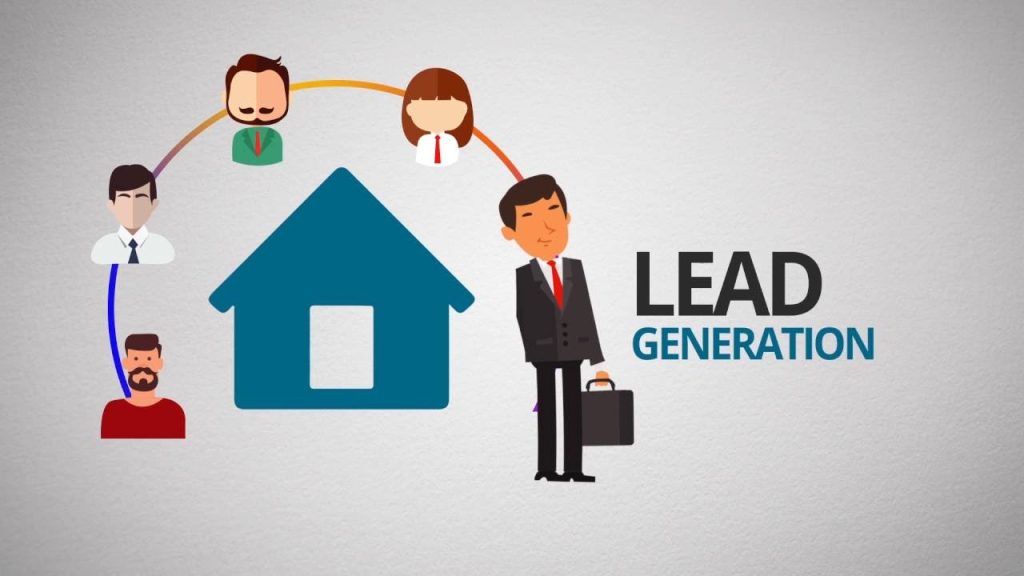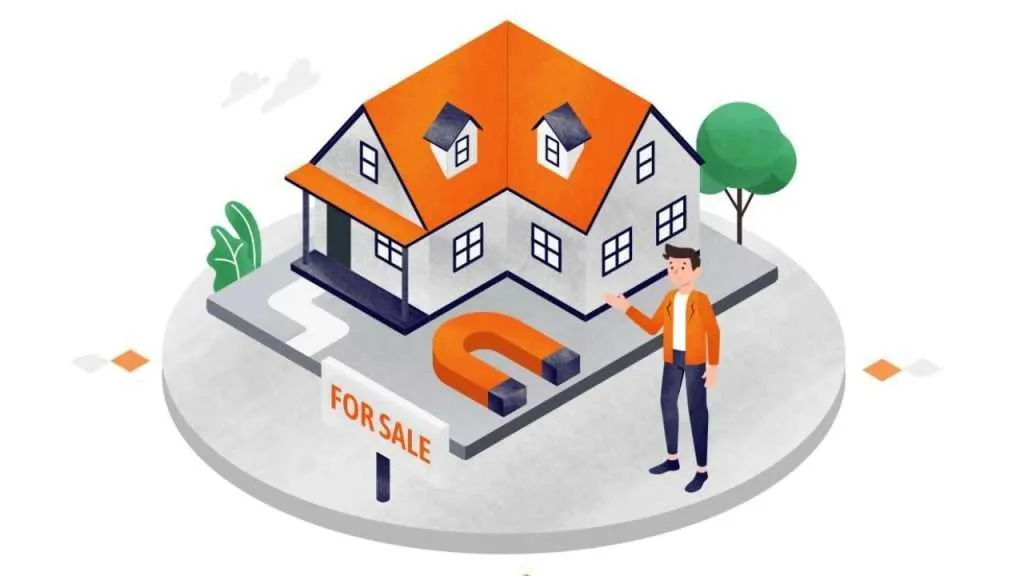Are you struggling to generate quality leads for your home improvement services? Discover the ultimate strategies for effective lead generation in our latest article, “The Ultimate Guide to Home Improvement Lead Generation” From optimizing your website for conversions to leveraging social media and email marketing, we cover everything you need to attract, nurture, and convert leads into loyal clients. Plus, learn how to track your success with key performance metrics and tools. Don’t miss out on transforming your lead generation efforts—read the full article now!
Introduction
In the unexpectedly rapid global growth of home improvement, generating high-quality leads is essential for both business sustainability and growth. Home improvement lead generation, the procedure of attracting and converting possibilities into potential clients, is at the coronary heart of the enterprise boom. Whether offering transforming services, renovations, or home upkeep, Consistent access to high-quality leads ensures that your business remains vibrant, profitable, and ahead of the competition.
In this article we will explain all the best Home improvement lead generation techniques for professional and show you how to attract, nurture, and convert leads into paying clients.
What is Lead Generation in Home Improvement?

Lead Generation in the Home improvement industry refers to the process of identifying and attracting homeowners or property managers who are curious about domestic preservation, upkeep, or other development services. These leads can be generated via numerous marketing channels, including search engines like Google, social media, email advertising, and even referrals.
Leads can be labeled as either inbound or outbound. Inbound leads come to you by locating your business via online searches, customer referrals, or organic referrals. Outbound leads, however, are generated by reaching out to capacity clients via cold calling, email blasts, or advertisements. Also, leads may be labeled as bloodless, heat, or warm, depending on their interest. Cold leads might also require extra nurturing, while hot leads are often ready to convert into paying customers.
Generating a consistent drift of quality leads is crucial for any home improvement business, as it ensures a pipeline of capability initiatives and clients.
Importance of Targeting the Right Audience
For a target Home improvement lead Generation, it’s crucial to figure out and focus on the proper target market. In the home improvement sector, this means specializing in people who are most likely to need your services, such as homeowners, landlords, or asset managers. Targeting the wrong target audience can result in wasted marketing dollars and occasional conversion charges.
Buyer Personas
Creating buyer personas can help organizations define their best customers. A purchaser persona represents the demographics, desires, and choices of a regular customer. For example, you might create personas such as “busy experts who need kitchen renovations” or “retired homeowners trying to upgrade their homes for growing older in the vicinity.”
Local targeting
Local focus is also critical within the Home improvement industry. Homeowners usually search for local offerings, which makes Local SEO and geographically targeted ads vital. Optimizing your content material, website, and online listings for local searches will ensure that your enterprise shows up in search results while potential clients for your region are searching for services like yours.
Key Channels for Home Improvement Lead Generation

There are several channels through which home improvement organizations can generate leads. Let’s explore a number of the handiest ones:
Organic Search (search engine optimization)
Search engine optimization (SEO) is one of the most powerful methods for home improvement lead generation. By optimizing your website with the proper key phrases (e.g., “kitchen transforming offerings” or “roof repair near me”) and content, you can rank higher in search engine results. The higher your business seems to search results, the more likely capability clients are to click on your website and contact you.
Local SEO is crucial, as many homeowners will look for contractors or home improvement services in their area. Be sure to claim your Google My Business list and ensure your contact information is correct and consistent across all platforms.
Paid Search (PPC Ads)
Pay-per-click (PPC) advertisements, consisting of Google Ads and Facebook Ads, can help you target unique audiences and critical phrases for home improvement lead generation. With PPC, your advert is displayed while someone searches for applicable phrases, and you only pay when someone clicks on your ad. For home improvement lead generation, this can be a powerful way to quickly generate leads, as you can bid on high-reason keywords like “bathroom upkeep services.”
Return on investment (ROI) is an essential aspect of PPC. Track your campaigns carefully to determine which keywords or adss produce the most leads, and regulate your method accordingly.
Social Media Marketing
Social media systems like Facebook, Instagram, Pinterest, and YouTube are perfect for showcasing your private home improvement tasks via attractive visual content. Showcase before-and-after photos, maintenance process videos, and customer reviews to attract homeowners. Platforms like Instagram and Pinterest are particularly visual mediums that can inspire homeowners to seek out remodeling ideas.
Facebook Ads also permit precise targeting primarily based on location, pastimes, and demographics, making it an ideal platform for reaching owners.
Email Marketing
Building an email list is important for home improvement lead generation over time. Email advertising and marketing permits you to stay top of mind with potential customers and provide precious content, including domestic maintenance suggestions or seasonal upkeep thoughts. Who might not be ready to make a decision immediately but could require your services in the future.
Referrals and Personal Testimonials
One of the most valuable assets of Home Improvement lead generation is personal testimonials referrals. Happy clients will likely endorse your offerings to friends and family, which could bring about excellent leads. You can incentivize these using imparting referral applications, wherein past clients can earn reductions or rewards for referring new commercial enterprises to you.
Lead Generation Services
Third-party home improvement lead generation agencies like IT Candles provide pre-certified leads immediately to home improvement organizations. While those offerings can provide you with a short inflow of leads, the fines of these leads can range, and the costs can add up over the years. Weigh the pros and cons of buying leads versus focusing on organic home improvement lead generation techniques you can manage.
Optimizing Your Website for Lead Conversion
Converting website visitors into potential customers is one of the most important parts of home improvement lead generation. A well-optimized website not only draws visitors but also guarantees that traffic takes the next step—contacting you for home development offerings. Let’s break down the key components of optimizing your website for lead conversion.
User-Friendly Website Design
A well designed, user-friendly website is crucial to growing a high-quality first impression for home improvement lead generation. Visitors need to be capable of navigating your website quickly and discovering the information they need without frustration. Critical factors in a user-friendly design consist of:
- Easy Navigation: Your website needs to have an easy and navigation design. Visitors should be able to access distinctive provider pages, the contact section, and your portfolio with minimum clicks. Consider including a search bar to assist users in quickly finding what they’re seeking out.
- Mobile-friendliness: With a growing number of customers accessing websites via smartphones, mobile optimization is vital. Ensure that your website shows well on all devices, from desktops to mobile telephones. A responsive design that routinely adjusts to unique screen sizes is vital for enhancing consumer revel in and engagement.
- Fast Loading Speeds: Studies show that a slow website can turn away potential leads. Users expect websites to load within 2-3 seconds. Use tools like Google PageSpeed Insights to optimize your web page’s loading time by compressing imagess, minimizing code, and enabling browser caching.
Call-to-Action (CTA) Optimization
Strong calls to action (CTAs) are crucial for turning website traffic into leads. A CTA is a spark-off that encourages traffic to take action, including filling out a contact form or requesting a free consultation. Effective CTAs encompass:
Examples of sturdy CTAs:
- “Get a Free Quote”
- “Schedule a Consultation”
- “Call Us Today”
- “Request a Free Estimate”
- “Download Our Home Improvement Guide”
Best practices for placing CTAs:
- At the Top: Ensure that your primary CTA is seen as quickly as site visitors land on the web page without requiring them to scroll.
- Multiple placements: Place CTAs strategically throughout your website, including on service pages, weblog posts, and the footer. Use diffused but effective reminders to manual users to take movement.
- Clear and concise: Your CTA must be direct and clean to recognize. Make the required move obvious, and use persuasive language to encourage engagement.
Contact Forms and Landing Pages
Contact Forms is one of the handiest tools for taking pictures lead facts. To maximize conversions, your forms need to be simple and user-friendly:
- Designing powerful touch paperwork: Only ask for essential records like calls, emails, cellphone numbers, and the kind of service required. Avoid overwhelming customers with long forms, as this may discourage them from filling it out. You can acquire more details later through follow-up conversations.
- Role of touchdown pages: Dedicated landing pages are compelling for lead generation, particularly while running centred advertising campaigns or promotions. These pages ought to focus on a single offer or service with minimal distractions. Ensure the landing web page’s CTA aligns with the person’s intent, whether they clicked on a PPC ad, social media post, or Email link.
Testimonials and Case Studies
Adding testimonials and case research to your website affords social proof, a powerful belief sign for potential customers. When traffic sees that others have had positive experiences with your offerings, they’re much more likely to agree with you and reach out for their domestic development needs.
- Client testimonials: Include critiques from past clients who can vouch for your understanding, professionalism, and first-rate workmanship. Include full names, pictures (if feasible), and precise information about your furnished services.
- Before-and-after visual stories: Visual evidence is compelling in the home improvement enterprise. Use before-and-after pictures of finished initiatives to demonstrate your talents and display the value you may provide.
Nurturing Home Improvement Leads

Once you’ve successfully generated leads, the subsequent crucial step is to nurture them in order to convert them into customers. Home improvement lead generation is building relationships with capable clients by interacting with them continuously and presenting valuable facts during their Decision-making approach. Here’s how you can generate your home improvement leads in growth conversions:
Follow-up Strategies
A timely and effective observe-up is one of the most vital elements in lead generation. Once a lead suggests a hobby, engaging with them immediately is crucial. Research shows that leads who acquire a follow-up within 24–48 hours are notably much more likely to transform than people who experience delays.
You can use more than one verbal exchange channel for follow-up, including mobile phone calls, emails, and text messages, depending on what works well for the consumer. Personalization is prime right here—use the client’s name, reference their precise domestic improvement needs, and offer tailored answers to create a more enticing experience.
To streamline this method, the use of Customer Relationship Management (CRM) tool may be particularly beneficial. CRM software permits you to control your leads, automate follow-ups, and track conversations at every sales funnel stage. With a CRM, you can set reminders, automate electronic mail sequences, and ensure no lead falls through the cracks, ultimately enhancing your lead conversion rates.
Offering Value (e.g., Free Consultations, Estimates)
A primary method for home improvement lead generation leads involves offering an initial fee. In the home improvement enterprise, loose consultations or estimates are highly attractive to ability customers. These services provide a cost estimate to the customer while enabling you to showcase your expertise and establish a connection.
When offering consultations or estimates, concentrate on the homeowner’s wishes, provide custom-designed advice, and function your offerings for a satisfactory answer. You can also provide extra sources, like an unfastened home improvement guide or a tick list for a specific preservation challenge. These treasured touch points demonstrate your commitment to helping the client and make them more likely to pick you while they are geared up to move forward.
Building Trust Over Time
Home improvement lead generation is not always a straightforward process, particularly in home improvement, where projects often involve substantial financial commitments. Some leads may also take months before making a last choice. This is why building lengthy-term acceptance as accurate is critical.
One of the great methods to build trust is through customized email drip campaigns. These campaigns will let you supply precious content immediately to your leads’ inboxes through the years. For instance, you could share home improvement lead generation pointers, case studies of beyond initiatives, or reminders about seasonal maintenance. This consistent verbal exchange continues your enterprise top-of-mind and demonstrates your knowledge, increasing the likelihood that leads will choose you once they’re ready.
Additionally, sharing seasonal maintenance checklists, mission timelines, and fulfillment tales from happy customers builds a sense of agreement and reliability. By staying connected and offering ongoing value, you establish a strong relationship with capable clients, which could result in conversions when the timing is right.
Common Mistakes in Home Improvement Lead Generation

Even with a reliable home improvement lead generation strategy in place, many home improvement groups must catch up on common pitfalls that can prevent their success. Avoiding these errors is crucial to maximizing the effectiveness of your efforts and making a particular lengthy-term boom.
Failing to Track Leads Properly
One of the company’s major mistakes is not effectively generating their leads. Without dependent software like a Customer Relationship Management (CRM) device, it’s easy for results to wander away in the shuffle. A CRM permits you to display every home improvement lead generation journey—from initial contact to conversion—so that you can prioritize high-conversion leads and follow up with them. Without this visibility, you can miss opportunities to convert fascinated potentialities into paying clients.
Not Qualifying Leads
Investing time and assets in unqualified or cold leads is another unusual mistake. Only some home improvement lead generation is prepared to shop for; those who specialize in leads that aren’t an excellent match for your services can drain your sources. To avoid this, implement a lead generation process that evaluates elements and the lead’s price range, timeline, and particular needs. This ensures that your sales team is concentrating on leads with the highest potential to convert, improving overall efficiency and satisfaction.
Neglecting Mobile Users
With more people trying to find home improvement services on their smartphones, neglecting mobile optimization is a critical error. A website that is difficult to navigate on a mobile device can cause ability leads to bounce and search out competitors. Ensure that your website is responsive, loads quickly, and provides seamless enjoyment for mobile users, as this will assist you in seizing extra leads from mobile site visitors.
Not Following Up Promptly
Timely follow-up is critical whilst in home improvement lead generation. Studies show that contacting a lead within 24 to 48 hours drastically increases the chances of conversion. Delayed responses can bring about lost possibilities, as leads may also grow to be disengaged or select a competitor who responds more quickly. Deploy a system for immediate follow-up in the United States by utilizing automation or delegating responsibilities to your sales team to ensure leads stay engaged and have a higher chance of converting.
Measuring Success: How to Track Lead Generation Performance
Tracking the achievement of your home improvement lead generation efforts is vital for optimizing your techniques and ensuring long-term growth. By monitoring the proper metrics and the usage of practical tools, you may refine your method to maximize efficiency and Return on Investment.
Key Metrics to Monitor
Several critical key performance indicators (KPIs) are vital to measuring the effectiveness of your home improvement lead generation efforts:
- Cost Per Lead (CPL): This metric indicates how much you spend to acquire every lead. Lowering your CPL while keeping your lead quality can enhance profitability.
- Conversion Rate: This measures the lead share that converts into paying clients. Tracking conversion quotes assist you to become aware of which advertising channels and strategies yield the high-quality outcomes.
- Lead-to-Client Ratio: This is the ratio of leads generated to the variety of leads that come to be clients. An excessive lead-to-purchaser ratio indicates that your sales process efficiently converts leads into an actual commercial enterprise.
Tools for Tracking and Analysis
To effectively monitor these metrics, home improvement businesses can utilize various tools:
- Google Analytics: This tool provides insights into website traffic, user conduct, and conversion tracking. You can use it to look how visitors are finding your web site and which pages generate the most leads.
- CRM Systems: Customer Relationship Management (CRM) structures like HubSpot or Salesforce can help you tune leads throughout the sales funnel, monitor interactions, and measure conversion prices.
- Marketing Automation Tools: Platforms like Mailchimp or ActiveCampaign automate lead nurturing approaches, track electronic mail campaign performance, and help you manage client journeys.
Continuous Improvement
The lead era is an ongoing process that requires regular refinement. By reading statistics out of your monitoring tools, you could:
- Identify underperforming channels and reallocate your advertising finances.
- A/B look at exclusive landing pages, calls to action, or advert campaigns to determine what drives higher results.
- Continuously optimize your lead generation procedure, ensuring it is well-timed and effective follow-ups.
By making records-pushed adjustments, you could improve the performance and effectiveness of your home improvement lead generation strategy through the years, driving more qualified leads at a lower value.
| Category | Emphasis (%) |
|---|
| Lead Generation Basics | 10% |
| Target Audience | 15% |
| Effective Channels | 20% |
| Website Optimization | 15% |
| Lead Nurturing | 10% |
| Common Mistakes | 10% |
| Performance Metrics | 10% |
| Tools | 5% |
| Continuous Improvement | 5% |
Key Take Aways
- Lead Generation Basics: Home improvement lead generation is essential for sustained business growth, focusing on attracting and converting homeowners into potential clients.
- Target Audience: Identifying and targeting the right audience, such as homeowners and property managers, is crucial for generating quality leads.
- Effective Channels: Key lead generation channels include SEO, PPC ads, social media marketing, email marketing, and referrals.
- Website Optimization: A user-friendly, mobile-optimized website with strong CTAs and testimonials is critical for converting leads.
- Lead Nurturing: Effective follow-up, offering value (e.g., free estimates), and building trust through personalized communication helps convert leads into paying clients.
- Common Mistakes: Avoid pitfalls like neglecting mobile optimization, not tracking leads, and failing to follow up promptly.
- Performance Metrics: Track metrics like cost per lead (CPL), conversion rates, and lead-to-client ratio to refine and optimize your strategies.
- Tools: Utilize tools like Google Analytics, CRM systems, and marketing automation platforms to track and improve lead generation efforts.
- Continuous Improvement: Regularly analyze data and adjust strategies to enhance lead generation performance and reduce costs over time.
Conclusion
A robust Lead Generation method is essential to driving business growth in the competitive home improvement industry. You could entice more qualified leads by using effective channels like search engine marketing, PPC, social media, and referrals and optimizing your website for conversions.
Tracking performance metrics, which include Cost per Lead (CPL) and conversion rates, allows you to refine your method for better effects. For businesses like IT Candles, combining records-driven insights with non-stop optimization will increase home improvement lead generation and Enhance customer satisfaction, resulting in lasting loyalty.
Source Links
Author Profile
- ShahzadaSEO
- Shahzada is the Founder & CEO of IT Ki Dunya Private Ltd. and a seasoned digital marketing consultant with a deep specialization in technical SEO. Since 2018, he has helped businesses optimize their online presence through strategic SEO and PPC campaigns. Shahzada’s expertise spans across SEO, digital marketing, and pay-per-click advertising, making him a trusted advisor for clients looking to improve their search engine rankings and overall digital marketing performance. Passionate about helping businesses grow, he delivers actionable insights that drive real results in a competitive market.
Latest entries
 Email MarketingNovember 25, 2024Tea Email Marketing: 7 Expert Tips to Win More Customers
Email MarketingNovember 25, 2024Tea Email Marketing: 7 Expert Tips to Win More Customers Email MarketingNovember 21, 2024Vacation Rental Email Marketing: 7 Secrets to Maximize ROI Today
Email MarketingNovember 21, 2024Vacation Rental Email Marketing: 7 Secrets to Maximize ROI Today Email MarketingNovember 19, 2024Email Marketing for Jewelers: 7 Proven Ways to Shine
Email MarketingNovember 19, 2024Email Marketing for Jewelers: 7 Proven Ways to Shine Lead GenerationNovember 18, 2024Solar Lead Generation: 7 Proven Strategies for Explosive Growth
Lead GenerationNovember 18, 2024Solar Lead Generation: 7 Proven Strategies for Explosive Growth

